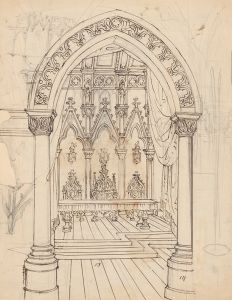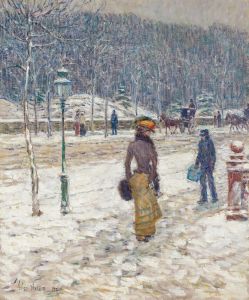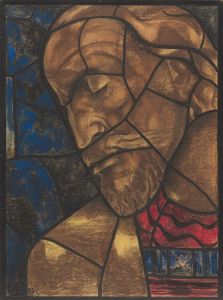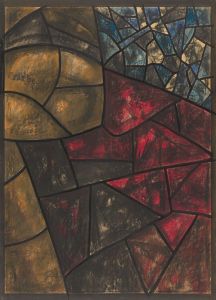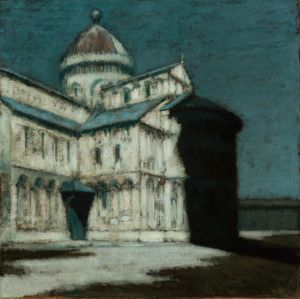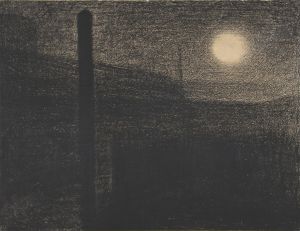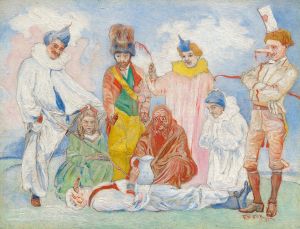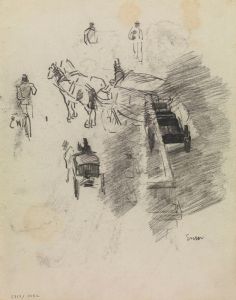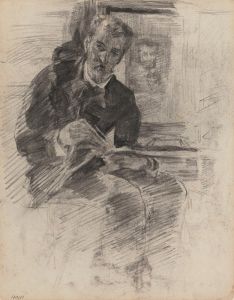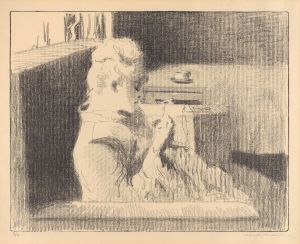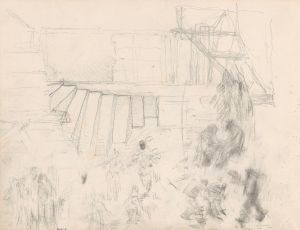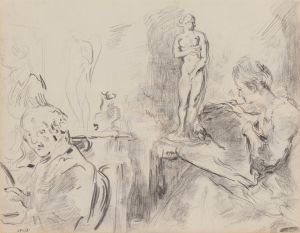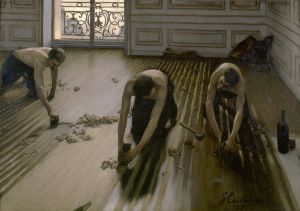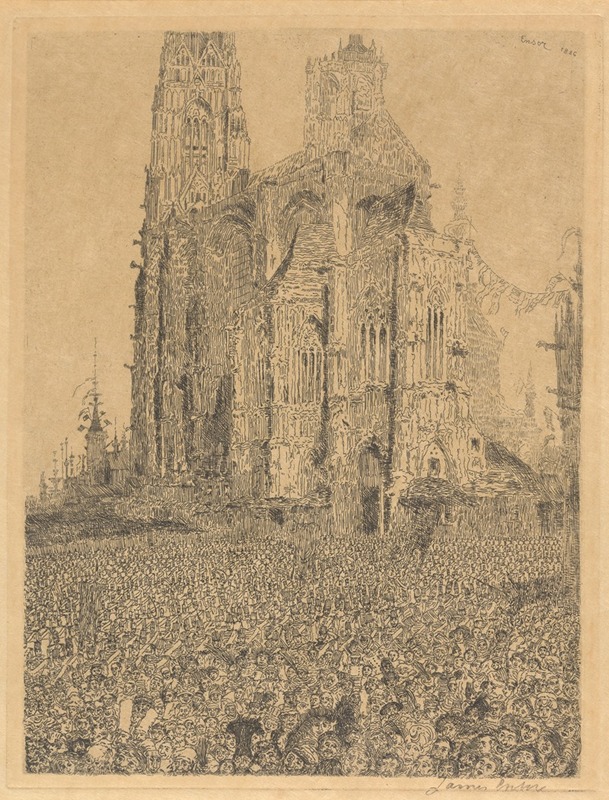
De kathedraal
A hand-painted replica of James Ensor’s masterpiece De kathedraal, meticulously crafted by professional artists to capture the true essence of the original. Each piece is created with museum-quality canvas and rare mineral pigments, carefully painted by experienced artists with delicate brushstrokes and rich, layered colors to perfectly recreate the texture of the original artwork. Unlike machine-printed reproductions, this hand-painted version brings the painting to life, infused with the artist’s emotions and skill in every stroke. Whether for personal collection or home decoration, it instantly elevates the artistic atmosphere of any space.
James Ensor's painting "De kathedraal" (The Cathedral) is a notable work by the Belgian artist, who is renowned for his unique style that blends elements of Impressionism, Symbolism, and Expressionism. Ensor, born in 1860 in Ostend, Belgium, was a pivotal figure in the transition from 19th-century realism to 20th-century modernism. His work often features fantastical imagery, vibrant colors, and a distinctive use of light and shadow, which are evident in "De kathedraal."
"The Cathedral" was painted in 1886, a period when Ensor was increasingly exploring themes of religion, society, and the human condition. This painting is a reflection of his fascination with the grandiose and the grotesque, a common theme in his oeuvre. Ensor's work often critiques societal norms and the hypocrisy he perceived in the world around him, and "The Cathedral" can be seen as part of this critical exploration.
In "De kathedraal," Ensor depicts a bustling scene outside a cathedral, filled with a crowd of people. The composition is dynamic, with a sense of movement and chaos that is characteristic of Ensor's style. The figures in the painting are rendered with a certain grotesqueness, a hallmark of Ensor's approach to human subjects. This distortion serves to emphasize the artist's critical view of society, suggesting a sense of alienation and absurdity.
The cathedral itself, a central element in the painting, looms large over the crowd, symbolizing the imposing nature of religious and societal structures. Ensor's use of color in "The Cathedral" is particularly striking; he employs a vivid palette that enhances the surreal and dreamlike quality of the scene. The interplay of light and shadow adds depth and drama, drawing the viewer's eye across the canvas and into the heart of the depicted chaos.
Ensor's technique in "De kathedraal" reflects his mastery of both traditional and innovative painting methods. He was known for his ability to blend fine detail with broad, expressive brushstrokes, creating a sense of texture and movement. This painting, like many of Ensor's works, challenges the viewer to look beyond the surface and consider the deeper meanings and critiques embedded within the imagery.
"The Cathedral" is housed in the Royal Museum of Fine Arts in Antwerp, Belgium, where it is part of a larger collection of Ensor's works. The painting is an important example of Ensor's contribution to modern art, illustrating his ability to merge personal vision with broader social commentary. Ensor's influence can be seen in the work of later artists, particularly those associated with the Expressionist movement, who drew inspiration from his bold use of color and form.
Overall, "De kathedraal" exemplifies James Ensor's unique artistic voice and his ability to convey complex themes through striking visual imagery. The painting remains a significant piece within the canon of modern art, offering insight into the mind of an artist who was both a product of his time and a visionary ahead of it.





